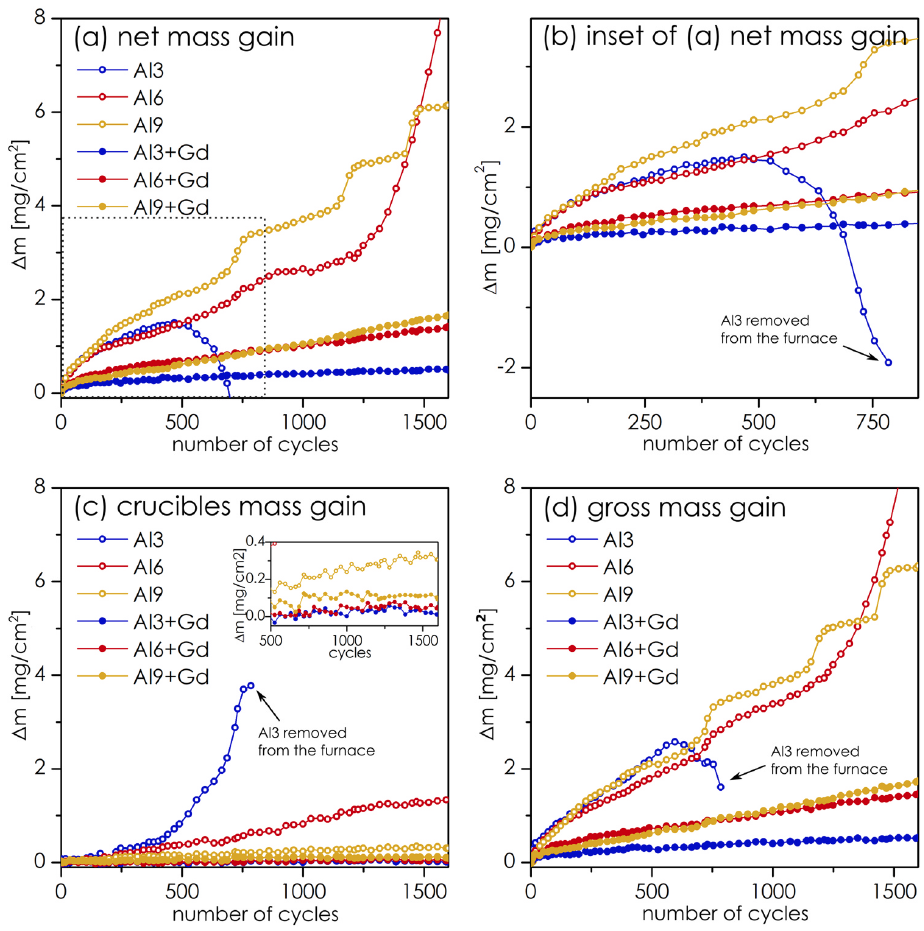M. Jawańska, J. Dąbrowa, M. Bik, G. Cieślak, P. Jeleń, K. Mroczka, J. Wyrwa, Ł. Rogal, A. Gil, M.C. Galetz, J. Jedliński
Corrosion Science 222 (2023), 111412, DOI: 10.1016/j.corsci.2023.111412

The immersion method leading to the formation of nano-dispersion of Gd2O3 on the surface of Alx(CoCrFeNi)100−x alloys (x = 3; 6; 9) is used to improve their corrosion resistance in air at 900 °C. Gd-modified samples’ mass gains are greatly reduced and scales’ spallation is nearly suppressed during thermal cyclic oxidation. Scales of the modified samples are much simpler, consisting mainly of Cr2O3, and spinel precipitates, with very low thickness (<5 µm) even after long exposures. Analysis of the oxidation products confirms the radically different oxidation behavior of the modified samples, proving the effectiveness of the reactive elements effects in HEAs.